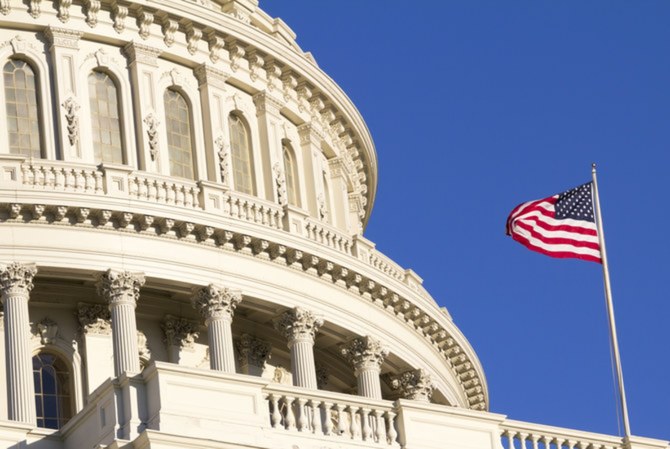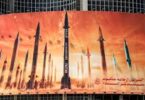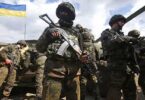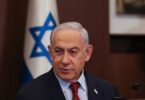Dr. Amal Mudallali
A statement by the head of the House Intelligence Committee, Rep. Mike Turner, set Washington on fire last week. He disclosed that his committee had information about a “serious national security threat,” without specifying what it was. Turner requested US President Joe Biden to “declassify all the information related to the threat.”
The statement was so ominous that “all hell broke loose,” as Rep. Jim Himes said. He revealed that he was “getting phone calls about whether people needed to head for the hills of West Virginia.” The hills of West Virginia is a reference to a Cold War hideout for the US government in case of a nuclear war. The press was fast in reporting that the threat was a “Russian anti-satellite nuclear weapon.” It brought the issue of destructive anti-satellite tests to the forefront of the debate on space security in the age of strategic instability.
The reporting on the story was mired in confusion, with some claiming American officials’ fear of a “nuclear weapon” that Russia might put in space, while others said that Moscow was “still far from completing the project” or that the launch of such a weapon “does not appear imminent.” As panic was setting in, the White House was quick to dial down the threat. National Security Council spokesman John Kirby confirmed that the US has information that Russia has the “troubling” capability of an anti-satellite weapon, but it has not been deployed yet and it does not pose an “immediate threat to anyone’s safety” or “cause physical destruction here on Earth.”
There was no mention of a nuclear weapon in this statement. House Speaker Rep. Mike Johnson also downplayed the threat, as did Secretary of State Antony Blinken, who said “this is not an active capability.” But a few days later, he thought the threat was real enough to raise the issue with the foreign ministers of China and India at the Munich Security Conference. Russia described the American warning about a new nuclear capability in space “a malicious fabrication.” Turner’s Republican colleagues called his release of the information “reckless” and questioned his motives. Rep. Andy Ogles accused Turner of having an ulterior motive and said that Turner’s move was to ensure funding for Ukraine. He also accused him of trying to guarantee passage of the Foreign Intelligence Surveillance Act’s Section 702, whose renewal is facing opposition in Congress. Congress and Washington’s tendency to turn everything into a political fight overshadowed the real issue at hand: space security. Satellites and their growing number and advanced technology are raising concerns about future wars in space, with the US signaling in recent months that both Russia and China are seeking to turn space into a ‘‘warfighting domain,’’ as Space.com reported.
The US is concerned about the safety of its satellites and is taking measures to protect and update its satellite capability. In what was referred to as a coincidence, the US Space Force launched six satellites that can “detect and track missile launches” the same day the report about Russia’s new “weapon” in space came out, according to the Space.com report. The New York Times reported that the US is moving to a new system to “put constellations of smaller and cheaper satellites into orbit to counter space-based threats of the sort developed by China and Russia.”
The new system relies on “blanketing” low Earth orbit with small, cheaper satellites, such as the Starlink internet communications system, the report added. Anti-satellite weapons are being developed by different powers in a more contested space, with some having already been deployed, including by Russia. Russia’s anti-satellite weapons test capability is known. Its last one was in 2021, when it destroyed one of its old satellites while it was in orbit. This test produced more than 1,500 pieces of trackable space debris in low Earth orbit, endangering the International Space Station. This debris will continue to pose a threat to other satellites and spacecraft for years to come.
The US, China and India have also conducted destructive anti-satellite tests, producing thousands of pieces of space debris and adding to the threat to the safety and sustainability of space. Recently, the US has become very active in trying to stop anti-satellite tests to preserve the security of space and stop debris generation and its lethal effect on space objects.
In December 2022, the US successfully persuaded the UN General Assembly to overwhelmingly pass a resolution calling for a moratorium on anti-satellite missile tests. More than 150 countries voted in favor, with only nine opposing it, including China, Iran and Russia, while India was among the nine countries abstaining. The White House has also committed to a unilateral moratorium vowing “not to conduct destructive, direct-ascent anti-satellite missile testing.” The claim that Russia might be putting a nuclear weapon in space, if true, takes the threat to a new level.
Both the US and Russia, after testing nuclear weapons in space in the 1960s, sat down together and hammered out the Outer Space Treaty of 1968, which prohibits the placement of nuclear weapons, or any other kind of weapons of mass destruction, in space. The claim comes at a time when “strategic stability” talks between the US and Russia are on hold and are hostage to the situation in Ukraine. The Russian rejection of resuming these talks is unfortunate because, even during the height of the Cold War, the US and Russia were able to compartmentalize their differences and agree on an arms control regime. This rejection came after Russia “rescinded” its ratification of the Comprehensive Test Ban Treaty because of the “US failure to ratify the treaty,” as the Kremlin said.
But despite the concerns about Russia’s intentions, experts doubt that Moscow will explode a nuclear weapon in space. Brian Weeden, of the Secure World Foundation, told Reuters that Russia “would undermine its credibility if it detonated a nuclear weapon in space.” Both Russia and China argued, when they voted against the US resolution on anti-satellite tests at the UN, that their main concern and the main threat to space security was the placing of weapons in space. Moreover, both Moscow and Beijing presented in 2008 and updated in 2014 a draft treaty on the Prevention of the Placement of Weapons in Outer Space. But the US rejected the treaty as “fundamentally flawed.” The UN and its multilateral processes could offer a forum to engage in a serious process on space security and preventing war in space. But if last year’s First Committee (Disarmament and International Security) meeting was any indication, there is little hope even at the UN. During the annual meeting of the committee in October, there were two opposing draft resolutions: one sponsored by the UK and supported by the US and their allies talking about the norms and principles of responsible behavior in space; and one by Russia supported by China and their allies with the goal of agreeing on a legally binding international instrument to prevent an arms race in space. Each side proposed a different working group.
This fragmentation on the multilateral level and last week’s “panic” in Washington offer an urgent lesson about the importance of starting to compartmentalize space security and deal with space as a separate domain not linked to conflicts on Earth. It is also time to move from norms and voluntary rules in space to legally binding and enforceable instruments.
Arab News







